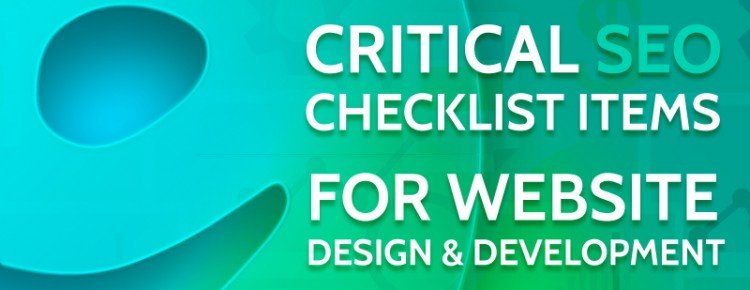The website developer may not be as knowledgeable as an SEO expert when it comes to creating a website that does well in the search engine. Although website development needs a set of technical skills, many different factors should be implemented to make your website SEO friendly. The only way you can ensure that you have incorporated the best SEO practices for your website is to follow a standard checklist. These points are essential SEO recommendations that a newly developed website must have from an SEO perspective.
Mentioned below are the 10 critical SEO checklist items for website design & development.
Checklist #1: Am I Building a Mobile Friendly Website?
The first thing the developers should keep in mind is that the site should perform well in all mobile devices. When it comes to design a mobile-friendly website, developers mainly consider following standard development techniques by using a responsive CSS stylesheet. However, some developers prefer to build a separate mobile subdomain. Although there is nothing wrong in creating a subdomain for the mobile version of your website, it is undoubtedly going to make your SEO difficult. This is because Google will consider the mobile subdomain as a separate web property, which will make specific SEO tasks more difficult.
Checklist #2: Is My Robots.txt File Correct?
There are times when the developer feels it necessary to block a specific part of the website or even the entire domain before it goes online. Usually, this is done by using a disallow command in the robots.txt file. This is normal, but the problem arrives when the developers forget to remove the disallow command even after when the site becomes live. It is essential to upload a correct robot.txt file once the site is live. The developer should always make sure that there is no disallow directive in the robots.txt site unless the client purposively asks the same. Using a Disallow: / command in the robots.txt means you are telling search engines not to crawl your website, which can be a significant mistake in SEO.
Checklist #3: Am I Using Correct HTML?
Sometimes, common HTML errors can become a significant problem regarding the site’s average loading speed and result in the poor rendering of the website on various platforms. Since Google now considers site loading speed as one of the most common ranking factors, having a slow site causes issues with site performance regarding keyword ranking. It is recommended that your website uses only W3C valid code. Although W3C validation is not mandatory for classification, it can indirectly affect your keyword ranking. Better coding can also help Google understand your website structure better and improves user experience.
Checklist #4: Am I Optimizing the Images Correctly?
Image optimization is one of the most common factors when it comes to improving your site’s average loading speed and is an important SEO parameter. You may use a high-quality massive image to give a stunning look to your website, but it increases the load time of the website. There is no harm in using a high-quality image on your site if the image is compressed correctly. Image compression guarantees that the quality of the image remains the same, but the image becomes lighter.
Checklist#5: Do the Images Contain Alt Attributes?
Image alt attribution is another essential part of image optimization. Alt attribution is used to tell the search engines about the context of the image. It is necessary to use the best keywords as image Alt tags to get the most of SEO benefits.
Checklist#6: Is the Analytic Code Implemented?
Analytic tracking code is another important factor regarding website SEO. It is also essential that the developer adds properly search console and Google Analytic code to check the health and track the traffic of the website. Apart from the Google search console and Analytic tool, you can use many other tools that are available online.
Checklist #7: Is the Server Using GZip Compression?
GZip compression is an essential element that lets the server compress files for faster network transfers. This type of compression makes sure that your web server provides smaller file sizes, which load faster for your website users. Enabling GZip compression is standard practice and can be considered an important SEO Checklist Item for Website Design & Development.
Checklist #8: Did I Upload a Sitemap.xml?
A sitemap is important for SEO as it tells search boats how to crawl a website easily. Sitemap file contains all the URLs of the website, and this is the most important thing that search engine crawler first sees in the website. The website crawling process becomes more comfortable when you if you put all your website links in one destination i.e., XML sitemap.
Checklist #9: Have I Fixed the Redirection Issue?
If overlooked by the site developer, there could be lots of redirection errors on a website. Some of the common redirection errors are 301, 302, 404, and many more. The best you can do in this regard is to review these issues by using an online tool and ask the developer to fix the same on a priority basis.
Checklist #10: Am I using Meta Title and Description?
Perhaps, the most important tags that affect your site’s SEO directly are the Meta Title and Meta Description tags. Title tags are important as it tells the search engine what your site is about. The Meta Title and Meta Description also appear in the search engine result page, so it’s very much important to optimize the same.


